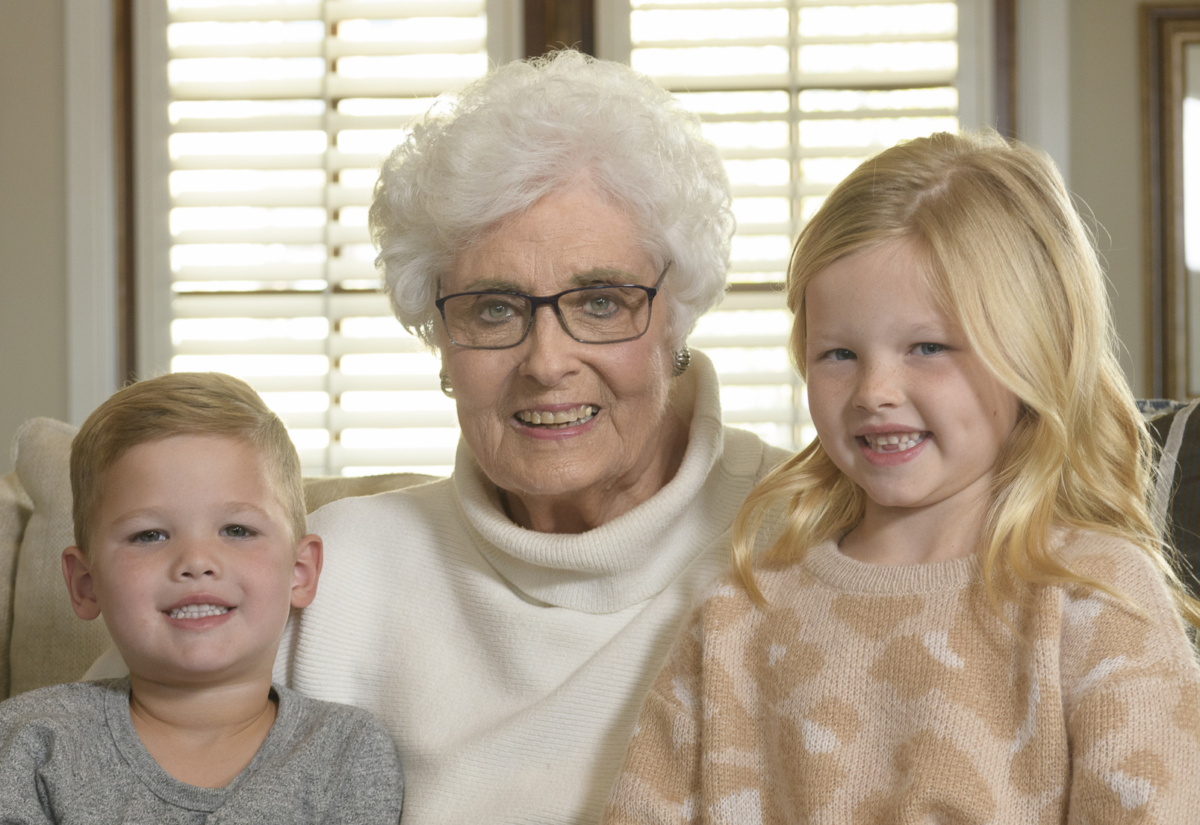The Importance of Physical Therapy for Older Adults: Enhancing Mobility and Quality of Life
As we age, it’s not uncommon to experience a change in our physical strength and mobility. Daily activities, such as standing, walking, and reaching for objects, can become more difficult. However, physical therapy plays a pivotal role in addressing these challenges and helping older adults maintain their independence and quality of life. One of VitalCaring’s physical therapists, Christi Foil, PT, walks us through the significance of physical therapy and guides us into a series of chair exercises she recommends.
The Importance of Physical Therapy for Adults
Physical therapy is a vital component of healthcare. It focuses on enhancing the strength, flexibility, and mobility of older adults, helping them maintain an active and independent lifestyle. Christi Foil, a dedicated physical therapist, shares her insights on the role of physical therapy in improving the well-being of older adults.
Building Relationships and Providing Personalized Care
“One of the most rewarding aspects of in-home physical therapy is the close relationships that develop between therapists, patients, and their caregivers. Over several weeks of therapy, a unique bond forms, akin to a close-knit family.” Therapists like Christi become intimately familiar with each patient’s struggles and triumphs, creating an environment of trust and understanding.
Adapting to Individual Environments
Every individual’s home presents a distinctive setting for therapy. Some patients may have steps at their entrance, narrow doorways, high beds, or low toilets. These unique challenges require therapists to be creative in tailoring the therapy program to meet the specific functional needs of each patient. This personalized approach ensures that therapy is not a one-size-fits-all solution but rather a precise intervention for each individual.
Promoting Independence and Confidence
“The ultimate goal of physical therapy is to help seniors become more functional, safe, confident, and independent both inside and outside their homes. Achieving these goals means patients can perform everyday activities with greater ease and peace of mind.” Christi’s experience has shown her that even small improvements can make a significant difference in quality of life.
Sit and Get Fit with Chair Exercises
In her role as a physical therapist, Christi Foil recommends a series of chair exercises that patients can safely perform. These exercises target various muscle groups, enhance mobility, and improve balance, all of which contribute to a higher quality of life. Remember to maintain good posture and engage in deep breathing during these exercises.
Toe Curls and Ankle Pumps:
Flex and extend your toes and pump your ankles up and down. Perform 10 repetitions on each foot.
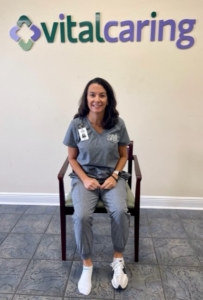
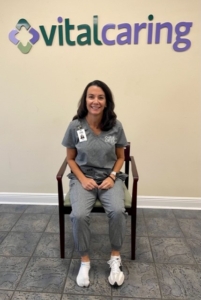
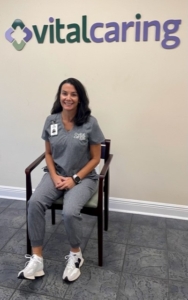
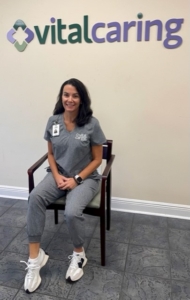
Kick Outs:
Kick your foot out and straighten your leg, squeezing your thigh when your knee is straight. Perform 10 repetitions for each leg.
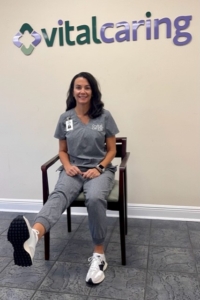
Seated Marching:
Alternate marching with each leg while maintaining good posture. Complete 10 repetitions for each leg.
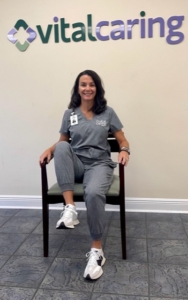
Trunk and Neck Rotation:
Cross your arms and twist your shoulders slowly to one side, then to the other. Do 5 repetitions on each side.
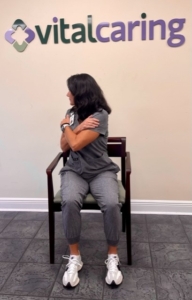
Shoulder Rolls:
Roll your shoulders forward for 5 repetitions, then roll them backward for another 5 repetitions.
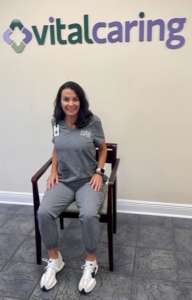
Shoulder Flexion:
Clasp your hands and raise your arms overhead for 10 repetitions.
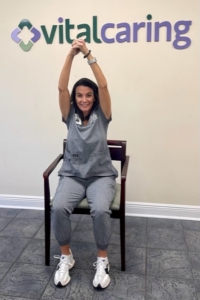
Sit to Stand:
Push up into a standing position, using armrests if necessary. Aim for 5-10 repetitions.
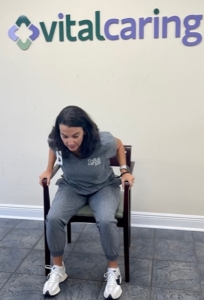
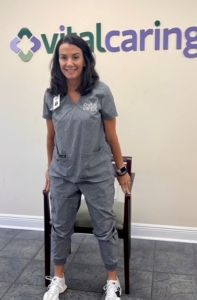
Standing Squats:
Hold onto the back of a chair for support and perform 10 standing squats.
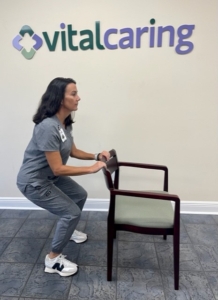
Standing Hip Abduction:
Raise one leg out to the side while holding onto the back of the chair, then switch legs. Perform 10 repetitions for each leg.
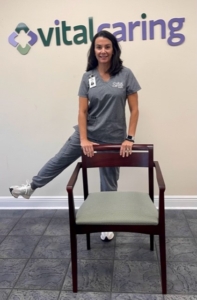
Heel Raises:
Raise up on your tiptoes while holding onto the back of the chair for balance. Complete 10 repetitions.
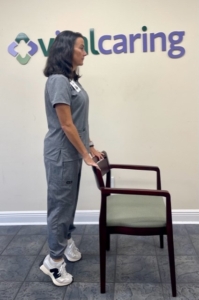
The Benefits of These Exercises
These chair exercises offer a wide range of benefits, as explained by Christi Foil, PT:
Improved Balance: Enhancing toe mobility and ankle pumps can improve dynamic balance, reducing the risk of falls.
Increased Strength: Exercises like kick outs, seated marching, and squats build strength in the legs and core, aiding in activities such as stair climbing and standing from a chair.
Enhanced Mobility: Trunk and neck rotations, along with shoulder exercises, improve spinal mobility and posture, facilitating daily activities like driving and reaching overhead.
Independence and Safety: Exercises like sit-to-stand and standing hip abduction directly impact the ability to perform essential tasks like using the toilet or transferring to a car.
Better Calf and Ankle Strength: Heel raises strengthen the calf muscles, which play a crucial role in mobility and balance.
Physical therapy is a critical resource for older adults looking to maintain their mobility, independence, and overall quality of life. By fostering close relationships with patients, adapting to individual environments, and employing a multidisciplinary approach, VitalCaring physical therapists like Christi Foil provide invaluable support. The chair exercises she recommends serve as an excellent starting point for older adults looking to enhance their strength and mobility, ensuring that they can continue to enjoy life to the fullest, inside and outside their homes.
